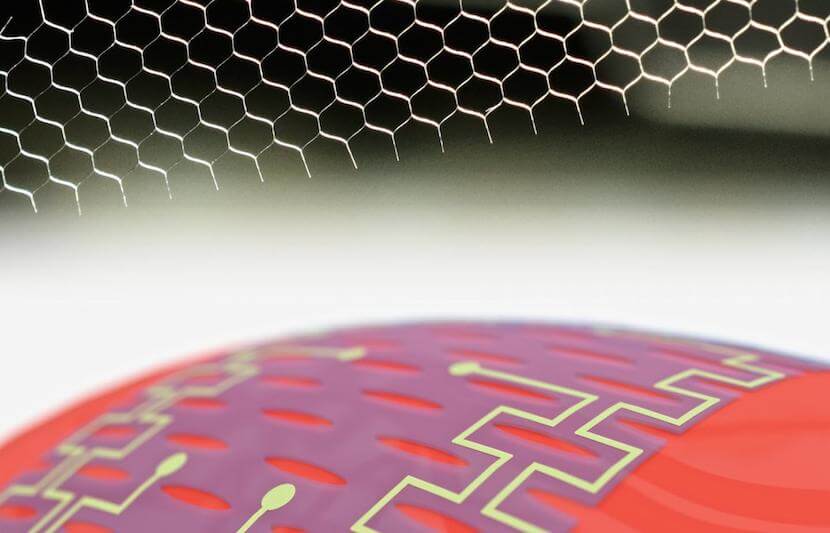A research team from the Toyohashi University of Technology in Japan has developed an ultrastretchable and deformable bioprobe using Kirigami designs. Kirigami, like Origami, is a Japanese form of paper art, but differs from Origami in that it involves cutting of the paper in addition to folding.
Credit: Toyohashi University of Technology
With this, lead researcher Takeshi Kawano, associate professor of electrical and electrical information engineering at the university, and his team hope to revolutionize how standard materials are used in stretchable electronics.
The study is published in Advanced Healthcare Materials.
What is a bioprobe?
A bioprobe is a device used to explore body parts or wounds. Currently, it is being used in both surgeries and medical studies.
Elastomer is a standard material used to make stretchable devices, such as a bioprobe. However, because the material intrinsically requires a large strain-force to stretch it, an elastomer-based bioprobe cannot follow the deformation of sensitive organs, such as soft biological tissues. With the conventional bioprobe, researchers cannot study the natural deformation and growth of such organs.
The Moment of Inspiration
One morning, Kawano woke up and saw his son playing with Origami and Kirigami. With just a few cuts, the boy made a plain old, flat paper into a highly stretchable material, deforming into multiple three-dimensional shapes.
“I saw him realize high stretchability of the paper while creating the Kirigami designs,” Kawano said in a statement. “This made me wonder whether it is possible to develop stretchable electronics using the concept of Kirigami.”
Advantages of a Kirigami-Based Bioprobe
Unlike the conventional elastomer-based bioprobe, which stretches the material itself, the newly developed Kirigami-based bioprobe stretches by bending each beam around the slits. As a result, a Kirigami-based bioprobe allows rigid and non-stretchable materials to be rendered more stretchable than elastomer-based bioprobe.
Because of its high stretchability, a Kirigami-based bioprobe can be used to follow the shape of spherical and large deformable biological samples, such as a heart or brain tissues.
Credit: Toyohashi University of Technology
“The stretchability of the Kirigami sheet can be determined by slit design,” Kawano told The University Network (TUN). “We showed 1,100% stretchability. In addition, because the bending force of the thin film is smaller than the strain force of the elastomer materials, the strain-stress of the Kirigami structure is significantly smaller compared to the elastomer based stretchable devices.”
A Kirigami-based bioprobe’s low strain-force also reduces the amount of force induced on organs and records biological signals in a less invasive way.
“We are extremely excited that the fabricated Kirigami-based bioprobes possess the distinct advantages of high stretchability and deformability, and are capable of recording biological signals from the cortical surface and beating heart of a mouse,” Kawano said in a statement.
Applications for Kirigami-based Methods
The researchers believe that their Kirigami-based method can be used in any industry that requires devices, such as sensors or actuators, to be stretchable and have low strain-force.
In particular, with Kirigami-based bioprobes, medical devices that are applied to sensitive organs will have higher accessibility and precision. For example, a Kirigami-based bioprobe’s low strain-force will help researchers to study tissues and organs that exhibit time-dependent changes in their surface and volume because of possible growth or disease. When successful, findings can be instrumental in understanding mechanisms governing growth and diseases, such as Alzheimer’s.
“The small strain stress of our Kirigami bioprobe offers the device’s small stress to the biological tissue, so the damage of the tissues can be minimized,” Kawano told TUN.
The team also believes that they can apply a Kirigami-based bioprobe to the brain-machine interface (BMI) technology and medical treatment for brain or heart diseases.
“Besides the stretchability, the Kirigami structure realizes the various three-dimensional transformation by using other slit designs,” Kawano told TUN. “Therefore, it has more capabilities to add functions to the film devices.”



